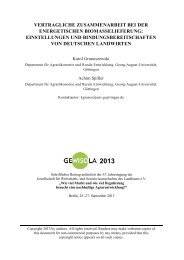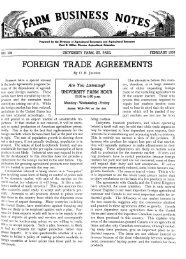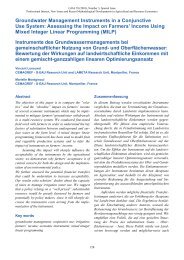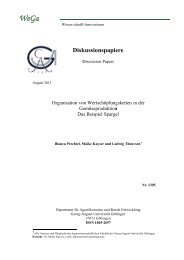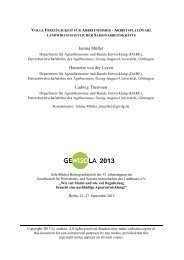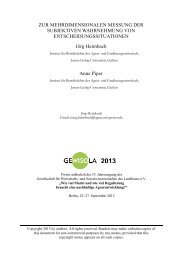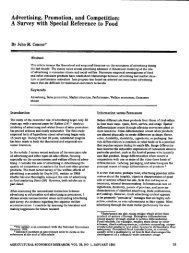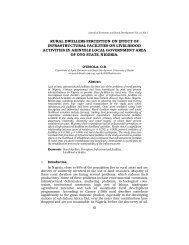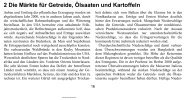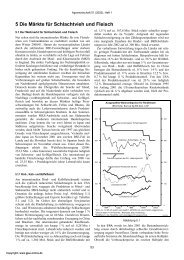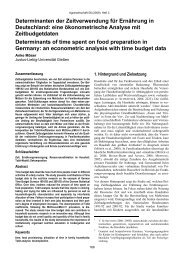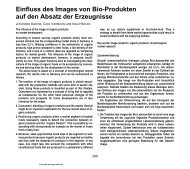District Institutes of Education and Training - Teacher Education
District Institutes of Education and Training - Teacher Education
District Institutes of Education and Training - Teacher Education
You also want an ePaper? Increase the reach of your titles
YUMPU automatically turns print PDFs into web optimized ePapers that Google loves.
<strong>District</strong> <strong>Institutes</strong> <strong>of</strong> <strong>Education</strong> <strong>and</strong> <strong>Training</strong>: A Comparative Study in Three Indian States<br />
V We are not supposed to make them write during the first three months.<br />
We have to only do songs <strong>and</strong> stories <strong>and</strong> all that but I make them write.<br />
SS Do you have any timetable or periods?<br />
V No, for the first 3 months we are not supposed to teach anything. So we<br />
must do only songs, stories <strong>and</strong> all that. Usually till 1:00 p.m. I make<br />
them do that <strong>and</strong> from 1:00 to 1:30 I get them to write.<br />
SS So how do you get them to write? Do you write on the board?<br />
V No, we cannot write on the board. If the supervisors come <strong>and</strong> see …<br />
because we are not supposed to. But if we wait till August it will become<br />
too late (24.7.00).<br />
Aware that if found doing this by the inspector she might be punished, Veena did<br />
not use the blackboard but taught numbers <strong>and</strong> letters mainly by writing them on<br />
the children’s slates. Children were encouraged to participate in a conspiracy with<br />
the teacher, should the inspector visit (a possibility <strong>of</strong> which they made aware at<br />
the very beginning <strong>of</strong> the first school year):<br />
V If saheb [the inspector] comes then quickly turn your slates over,<br />
otherwise he will ask me “this is not in the course then why are you<br />
teaching?” (2.8.00)<br />
According to the curriculum design, the emphasis while teaching literacy should<br />
follow the sequence <strong>of</strong> listening, speaking, reading <strong>and</strong> then writing. Veena<br />
however believed that learning to write is the first step <strong>and</strong> that once writing is<br />
mastered, reading <strong>and</strong> recognition <strong>of</strong> letters will soon follow. Although when<br />
initially asked, she said she would draw pictures on the board as in the textbook<br />
<strong>and</strong> combine these with presentation <strong>of</strong> letters, she later said she would write<br />
letters on the board <strong>and</strong> ask children to repeat them over <strong>and</strong> over again – a more<br />
accurate reflection on her practice that was borne out through the observations.<br />
Veena focused first on writing accompanied by reading aloud what is being<br />
written. Initially this was through a process <strong>of</strong> her writing a symbol on the slate<br />
for the child to trace over, <strong>and</strong> by guiding his or her h<strong>and</strong> where necessary. She<br />
would also <strong>of</strong>ten rule up a slate into columns, completing one column herself <strong>and</strong><br />
asking the child to fill in the others. After the initial three months when use <strong>of</strong> the<br />
blackboard became legitimate, she would write the symbol on it for children to<br />
copy. Once the copying had been done, each child would come to show her<br />
the slate, <strong>and</strong> she usually judged the marks on it ‘right’ or ‘wrong’ without<br />
much attempt to identify reasons for errors. Sequences such as the following were<br />
very common:<br />
[Muno has come to show the teacher his slate]<br />
V writes ma on it.<br />
26 DFID



